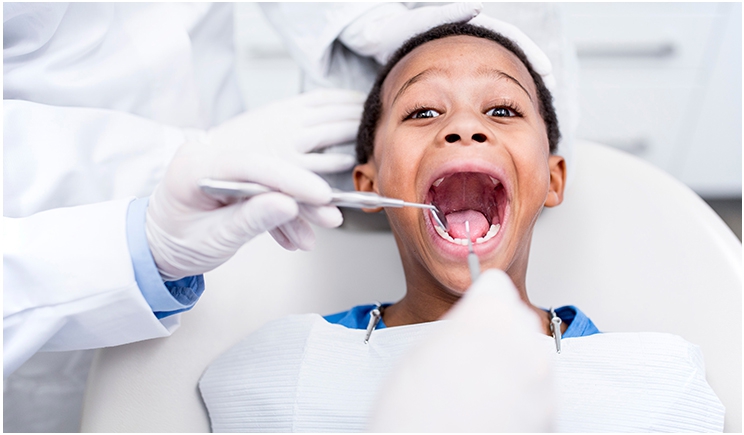
As pediatric dentists, it’s important to actively seek out ways to help patients feel comfortable from the moment they enter the practice to when they leave the chair. Studies show that approximately 33% of children suffer from dental fear and anxiety.
Childhood dental phobia can carry into adulthood. These patients may avoid dental treatment later in life, which can lead to poor oral health and myriad other health issues. However, there are many ways pediatric dentists can help minimize this outcome, starting with the equipment we select to bring into our practices.
Traditional Equipment and Pediatric Patients
The noise of a high-speed handpiece can be overwhelming for a child just upon entering the practice, and it can create an uphill battle when it comes to welcoming the child into the chair after this first impression.
Beyond the noise, the handpiece itself can also cause alarm, from the vibrations of the device during a procedure to the “burnt” smell that can occur during the process. And then there’s the pain associated with dental drills as well for things like scraping, which is quite synonymous with pain.
In addition, some children are placed under anesthesia for certain procedures, which can be concerning for parents. Patients may also need to be medicated for pain if they are awake and following the procedure to help with discomfort.
Another way to administer a drug to reduce pain for dental procedures is the dreaded shot. But with up to 50% of children expressing a fear of needles, pediatric dentists face a lose-lose situation, and it’s no wonder so many children fear the dentist.
Dental Lasers and Pediatric Patients
Thankfully, all of these fears and more can be neutralized through the use of dental lasers. Dental lasers are an excellent alternative to traditional devices and can be used for both tooth and soft-tissue procedures.
There are fewer loud sounds that children have affectionately said sound like “popcorn popping.” The laser also creates no vibrations or heat, and it’s much less invasive. And because dental lasers are less invasive, there is less bleeding with soft-tissue procedures, which means fewer postoperative issues.
As children experience less discomfort during a procedure with a dental laser, many do not need local anesthesia. This eases the minds of parents and patients alike, while also helping the dentist build a better relationship with the patient.
After a patient undergoes a dental treatment where a laser is used, tissue normally heals more quickly than it would if traditional procedures are utilized. Not only will pediatric patients feel less discomfort in the chair, but they will also feel less pain once they leave the office and return home. When no local anesthetic is used for laser procedures, the patient is able to return to normal activities immediately afterward with no fear of lip or cheek biting.
Another benefit of dental lasers is that they often require less time. While no one enjoys sitting in a dental chair for long periods of time, this is especially difficult for children, who are said to have increasingly short attention spans in the modern-day digital age.
Making the Switch to Kid-Friendly Dental Procedures
Pediatric dentists have a pivotal role in making children feel comfortable with dental care and in ultimately shaping routine dental visits moving forward. In fact, the American Academy of Pediatric Dentistry (AAPD) recognizes the use of lasers as a beneficial instrument in providing specialized treatments to pediatric patients, including individuals with special needs.
While there is always an onboarding process and training as part of adopting new technology, the return on investment in providing pediatric patients with a quick, virtually painless trip to the dentist is invaluable.
Dr. Curtis was inspired to become a pediatric dentist after the poor dental experiences he had as a child. He strives to make dental visits fun for kids by providing gentle, compassionate care. He graduated from Texas A&M University with a BS in biomedical science and a minor in business. He attended Baylor College of Dentistry, where he was awarded his DDS. Remaining at Baylor, he completed his rigorous pediatric dentistry training. He is an AAPD Harris Fellow and an ABPD Board Certified Pediatric Dentist. Also, he and his wife Rachel are proud parents to Birdie, Dodson, and Emerson.
Related Articles
Lasers Improve Dental Hygiene Treatment
COVID-19 Cripples School-Based Dental Programs for Low-Income Communities
The Importance of Timely Pediatric Care











